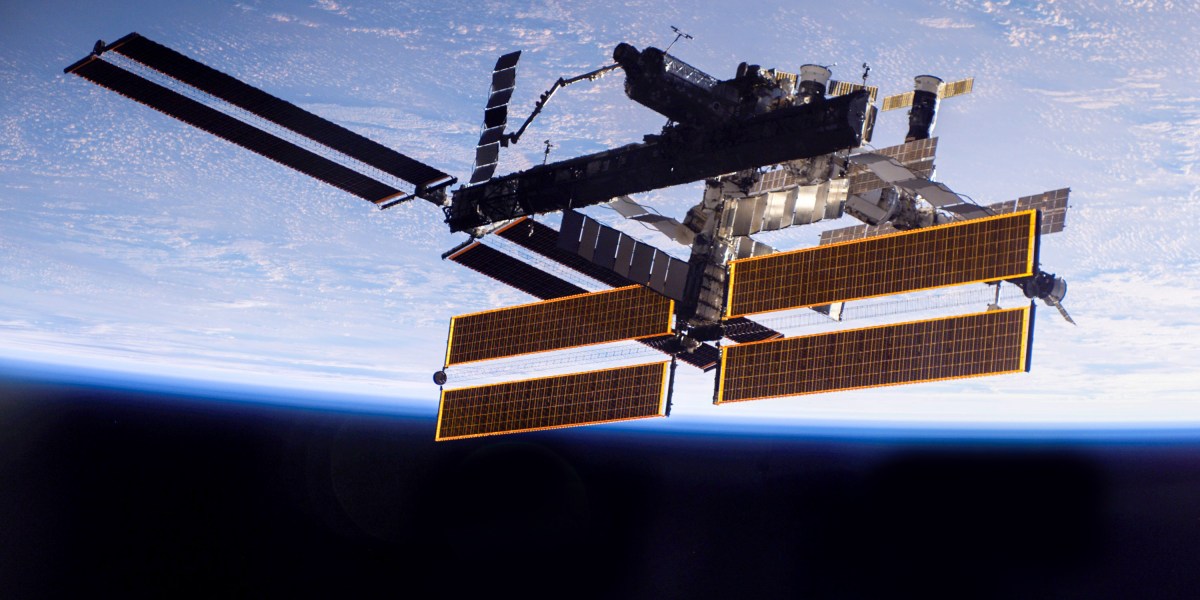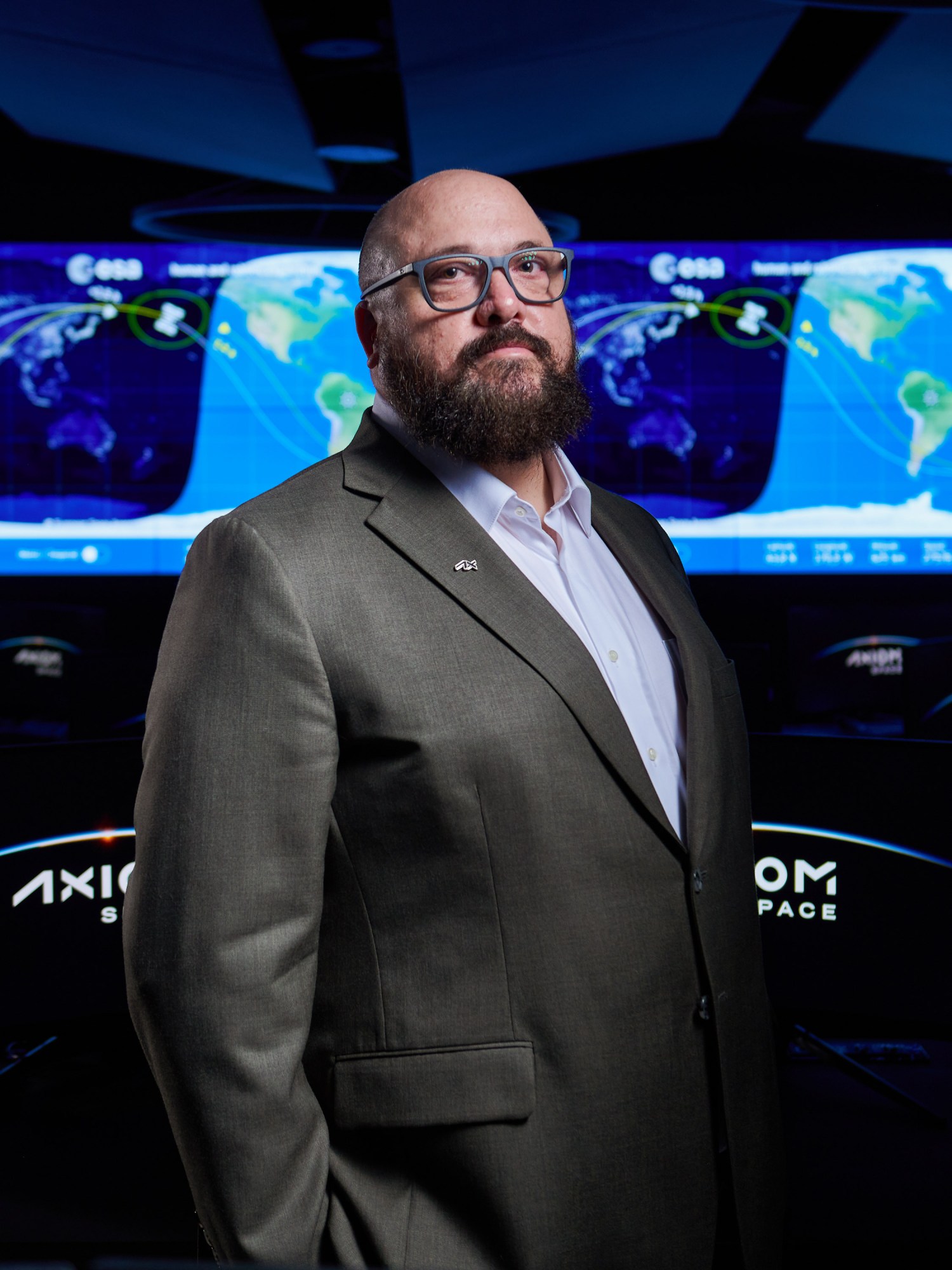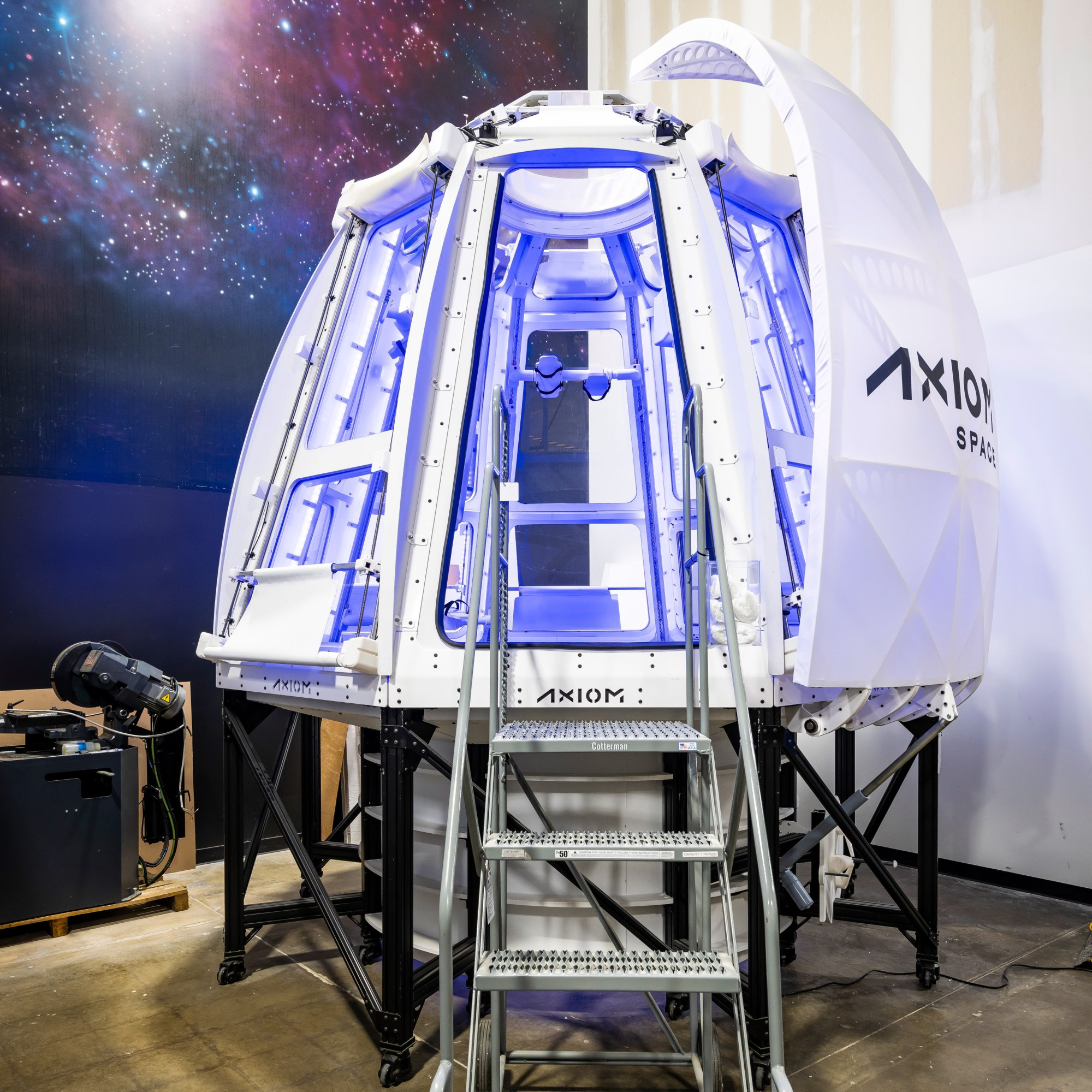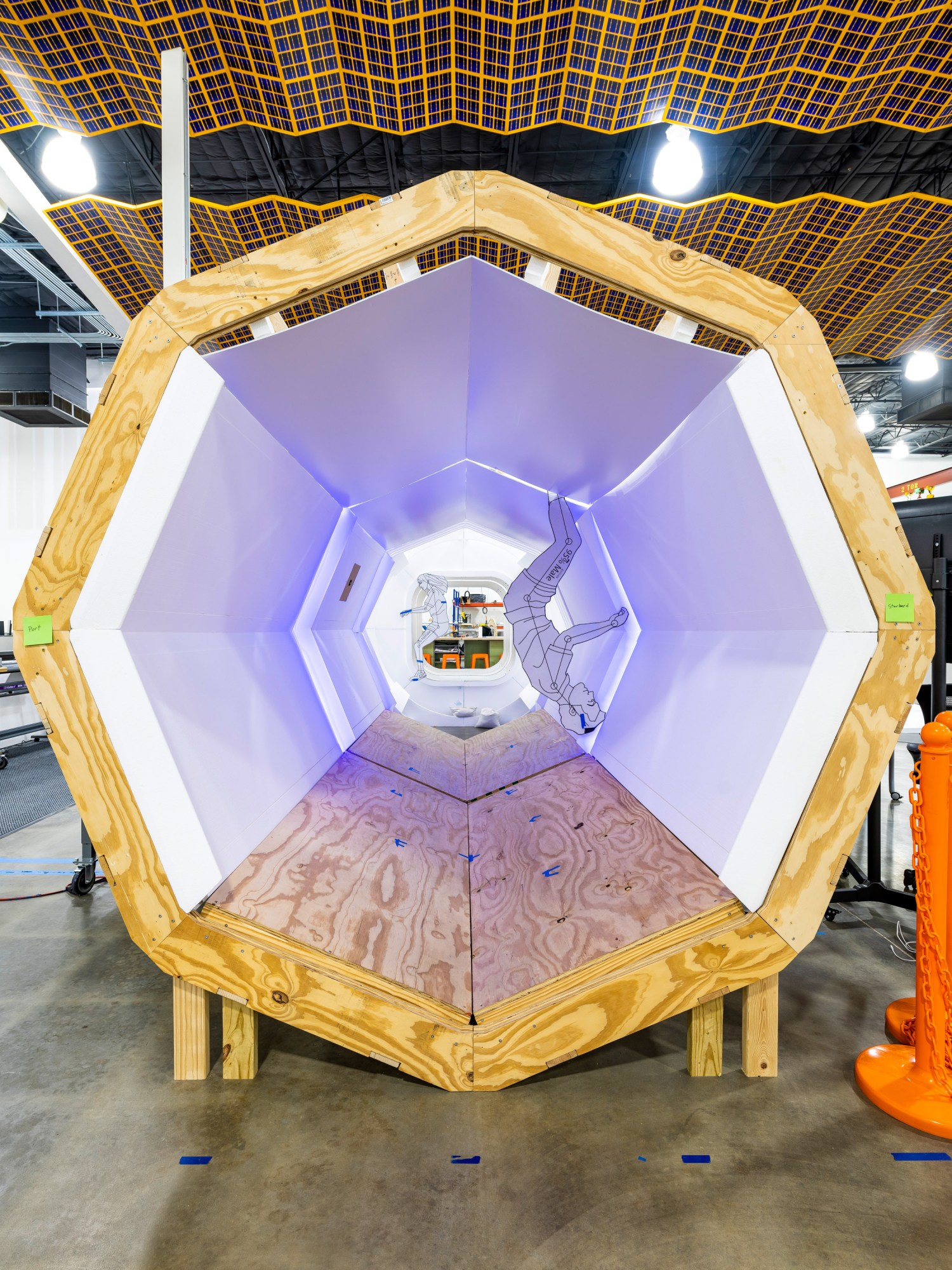Notifications
ALL BUSINESS
COMIDA
DIRECTORIES
ENTERTAINMENT
FINER THINGS
HEALTH
MARKETPLACE
MEMBER's ONLY
MONEY MATTER$
MOTIVATIONAL
NEWS & WEATHER
TECHNOLOGIA
TV NETWORKS
VIDEOS
VOTE USA 2026/2028
INVESTOR RELATIONS
COMING 2026 / 2027
ALL BUSINESS
COMIDA
DIRECTORIES
ENTERTAINMENT
FINER THINGS
HEALTH
MARKETPLACE
MEMBER's ONLY
MONEY MATTER$
MOTIVATIONAL
NEWS & WEATHER
TECHNOLOGIA
TV NETWORKS
VIDEOS
VOTE USA 2026/2028
INVESTOR RELATIONS
COMING 2026 / 2027
About Me
 Latinos Media
Latinos Media Latinos Media provides all types of news feeds on a daily basis to our Members
Posted by - Latinos Media -
on - April 17, 2024 -
Filed in - Technology -
-
506 Views - 0 Comments - 0 Likes - 0 Reviews

Washington, DC, was hot and humid on June 23, 1993, but no one was sweating more than Daniel Goldin, the administrator of NASA. Standing outside the House chamber, he watched nervously as votes registered on the electronic tally board. The space station wasn’t going to make it. The United States had spent more than $11 billion on it by then, with thousands of pounds of paperwork to show for it—but zero pounds of flight hardware. Whether there would ever be a station came down, now, to a cancellation vote on the House floor.
Politically, the space station was something of a wayward orphan. It was a nine-year-old Reagan administration initiative, expanded by George H.W. Bush as the centerpiece of a would-be return to the moon and an attempt to reach Mars. When voters replaced Bush with Bill Clinton, Goldin persuaded the new president to keep the station by pitching it as a post-Soviet reconstruction effort. The Russians were great at building stations, which would save NASA a fortune in R&D. In turn, NASA’s funding would keep Russian rocket scientists employed—and less likely to freelance for hostile foreign powers. Still, dissatisfaction with NASA was a bipartisan affair: everyone seemed to agree that the agency was bloated and ossified. Representative Tim Roemer, a Democrat from Indiana, wanted to make some big changes, and he introduced an amendment to the NASA authorization bill to kill the station once and for all.
Goldin had made more than 100 phone calls in the day and a half before the vote, hoping to sway lawmakers to endorse the station, which he saw as critical for studying biomedicine, electronics, materials engineering, and the human body in a completely alien environment: microgravity. Things down to the molecular level behave profoundly differently in space, and flying experiments a week at a time on the shuttle wasn’t enough to learn much. Real research required a permanent presence in space, and that meant a space station.
Supporters of the space station had gone into the vote expecting to win. Not by much—20 votes, maybe. But the longer the vote went on, the closer it got. Each side began cheering as it pulled ahead. The 110 new members of Congress, none of whom had ever before cast a vote involving the station, revealed themselves to be less reliable than expected.
Finally, the tally reached 215–215, with one vote remaining: Representative John Lewis of Georgia, a civil rights legend. As Lewis walked down the hall toward the legislative chamber, Goldin’s legislative aide, Jeff Lawrence, told the administrator to say something—anything—to win him over. As Lewis walked by, Goldin had only one second, maybe two, and the best he could get out was a raw, honest, “Congressman Lewis, the future of the space program depends on you.” He added: “The nation is counting on you. How will you vote?”
Lewis smiled as he walked by. He said, “I ain’t telling you.”
The station, later named the International Space Station, survived by his single vote, 216–215. Five years later, Russia launched the first module from Kazakhstan, and since November 2000, not a single day has elapsed without a human being in space.
NASA designed the International Space Station to fly for 20 years. It has lasted six years longer than that, though it is showing its age, and NASA is currently studying how to safely destroy the space laboratory by around 2030. This will involve a “deorbit vehicle” docking with the ISS, which is the size of a football field (including end zones), and firing thrusters so that the station, which circles the Earth at five miles per second, slams down squarely in the middle of the Pacific Ocean, avoiding land, injury, and the loss of human life.
As the scorched remains of the station sink to the bottom of the sea, however, the story of America in low Earth orbit (LEO) will continue. The ISS never really became what some had hoped: a launching point for an expanding human presence in the solar system. But it did enable fundamental research on materials and medicine, and it helped us start to understand how space affects the human body. To build on that work, NASA has partnered with private companies to develop new, commercial space stations for research, manufacturing, and tourism. If they are successful, these companies will bring about a new era of space exploration: private rockets flying to private destinations. They will also demonstrate a new model in which NASA builds infrastructure and the private sector takes it from there, freeing the agency to explore deeper and deeper into space, where the process can be repeated. They’re already planning to do it around the moon. One day, Mars could follow.
From the dawn of the space age, space stations were envisioned as essential to leaving Earth.
In 1952, Wernher von Braun, the primary architect of the American space program, called them “as inevitable as the rising of the sun” and said they’d be integral to any sustainable exploration program, mitigating cost and complexity. Indeed, he proposed building a space station before a moon or Mars program, so that expeditions would have a logistical way station for resupply and refueling.
“Going into the 1960s, there’s a lot of consensus and momentum around the idea that space is going to be a three-step process,” says historian David Hitt, coauthor of Homesteading Space: The Skylab Story. Step one, he told me, is transportation. You’ve got to leave Earth somehow, which means developing the infrastructure to build human-safe rockets and launching them. Step two is habitation. You need a place to live once you are in space—for its own sake as a science laboratory, and also as a logistical waypoint between Earth and other celestial objects. “Once you have transportation and habitation,” he says, “you can take your next step, which is exploration.”
The mindset changed after the Soviet Union beat the United States to orbit, first with its Sputnik I satellite in 1957 and again when cosmonaut Yuri Gagarin became the first man in space in 1961. President John F. Kennedy committed the nation to landing a man on the moon and returning him safely to Earth “before this decade is out.” It was an outrageously ambitious goal, given that NASA had only managed to launch a human to space three weeks earlier. “It required moving quickly, and the way you do that is to take the three-step plan and get rid of step two,” Hitt told me. “As it turned out, if you skip the habitation stage, it works—the US got to the moon, but did so in a way that did not lay the groundwork for the long-term sustainability of the program.”
“Even going back to the Mercury program, the goal was always the moon. Skylab is the first time that space itself became the destination.”
David Hitt, historian
We are still working on that. Two years after the final Apollo mission, NASA launched the first American space station, Skylab. Adapted from the second stage of a Saturn V moon rocket, it was enormous: 99 feet (30 meters) long and by far the heaviest spacecraft ever launched. NASA would eventually launch three missions of three astronauts each to the station, where they would perform more than a hundred experiments.
“In a very real way, Skylab was the first American space mission,” Hitt says. “Before Skylab, we were flying moon missions—even going back to the Mercury program, the goal was always the moon. Skylab is the first time that space itself became the destination.” Its goals were foundational to what would later come. “The big thing that Skylab taught us is that human beings can, in fact, live and work long durations in a space environment. If we’re serious about going to Mars, you [may] spend way longer in space than you’re going to spend on the Martian surface.”
Skylab remains the only space station built and launched solely by the United States. In 1986, the Soviet Union launched the first module of Mir, a modular space station built like Lego blocks, one segment at a time. Because NASA had discontinued the Saturn V rocket, the agency necessarily adopted the same modular station model, eventually partnering with Russia and other countries to build the ISS. Today it shares the skies with Tiangong, China’s permanent space station, the first module of which launched in 2021. None of these stations have acted as moon or Mars way stations in the von Braun mold; to satisfy that requirement, NASA is developing a future station called Gateway that is intended to orbit the moon. Its first module could launch next year.
Although they never became transportation hubs, each space station has advanced the critical cause of learning what long stretches of space do to the human body. (Russian cosmonaut Valeri Polyakov, who flew on Mir, holds the all-time record for continuous spaceflight, with 437 days.) Researchers still have a relative paucity of knowledge about how the body responds to space. On Earth, we have the collective experience of more than 100 billion human beings across 300,000 years, and still much about the human body remains a mystery. Why do we yawn? What should we eat? Fewer than a thousand people in 63 years have ever been to space. Such studies can only occur on permanent space stations.
“During the shuttle program, we were studying the effects of just a shorter-duration spaceflight—a couple weeks—on the human body,” Steven Platts, chief scientist of NASA’s Human Research Program, told me. Among the problems was “orthostatic intolerance,” which is the body’s inability to regulate blood pressure. It affected about a quarter of crew members who returned from space. Once NASA and Russia launched the ISS and spaceflight durations increased from weeks to months, that number leaped to 80%. “We spent a lot of time trying to tease out that mechanism. And we eventually came up with countermeasures so that that risk is now considered closed,” he says.
Other challenges include spaceflight-associated neuro-ocular syndrome, which is a change in the structure and function of the eye, something researchers identified about 10 years ago. “We didn’t really see it with the shuttle, but as we started doing more and more station missions, we saw it,” Platts says. They have also identified small, structural changes in the brain but have yet to figure out what that means in the long term: “That’s a relatively new risk that we didn’t know about before the space station.”
Overall, he says, the ability of the human body to regulate its function in space is “amazing.” His group is working on about 30 risks to humans posed by space exploration, which it classifies in a color-coding scheme. Green issues are well controlled. Yellow risks are of moderate concern, and red ones must be solved before missions are possible. “Right now, for low Earth orbit there are no red. Everything is yellow and green. We understand it pretty well and we can deal with it. But as we get to lunar, we see more yellow and some red, and as we get to Mars, we see more red yet,” Platts says. “There are things that we know right now are a problem, and we’re working hard to try and figure them out, either from a research standpoint or an engineering standpoint.”
Some problems can only be studied as we venture farther into space—the long-term effects of Mars dust on the human body, for example. Others, such as the unanticipated development of psychiatric disorders, can be studied closer to home.
NASA and other institutions are currently studying all this on the ISS and will need to continue such research long beyond the space station’s retirement—one reason why it is imperative that someone else launch a successor space station, and soon. To that end, just as it did with SpaceX from 2006 through 2011, the agency has seeded several companies with small investments, promising to lease space on emergent space stations. And right now, the soonest likely to launch is being led out of a sprawling former Fry’s Electronics retail store in a shopping center complex in Texas.
I met Michael Baine, the chief technology officer of Axiom Space, on a gray, drizzly January morning at the entrance to its Space Station Development Facility in Houston. Baine began his career at NASA Johnson Space Center just down the road, where he worked on everything from the shuttle and station to experimental lunar landers. Later, he left the agency to join Intuitive Machines as its chief of engineering. In February, that company’s Nova-C spacecraft, Odysseus, became the first US spacecraft to land successfully on the moon since the end of the Apollo program in 1972, making Intuitive Machines the first private company to land successfully on a celestial object beyond Earth. Baine has worked at Axiom Space since 2016. The startup’s long-term goal is to build the first private commercial space station. It has successfully organized and managed three private missions to the International Space Station, in large part to study firsthand how humans work and live in space, so that they might design a more user-friendly product.
Axiom is not the only company interested in launching private space stations. Most notably, Blue Origin announced in 2021 that in partnership with the aerospace outfit Sierra Nevada, it would build Orbital Reef, a “mixed-use business park” capable of supporting up to 10 people simultaneously in low Earth orbit. In January, Sierra Nevada successfully stress-tested a one-third-scale test article of its habitat module, with the intention of launching a station into orbit on a Blue Origin New Glenn rocket in 2027. Other companies, such as Lockheed Martin, have made moves into the market, though their progress is less clear.
Axiom plans to build its own orbital facility much differently, Baine told me as we entered the facility. Suspended from the wall above, large, low-fidelity models of spacecraft hung from the ceiling, including the X-38 (an experimental emergency return vehicle for space station crew) and Zvezda, the Russian module of the ISS, which today is plagued by age-induced stress fractures and consequent leaks. Crew vehicles no longer dock with it.
 Michael Baine, the chief technology officer of Axiom Space, began his career at NASA Johnson Space Center.
Michael Baine, the chief technology officer of Axiom Space, began his career at NASA Johnson Space Center.
“It’s very difficult to build a full, self-sustaining space station and launch it in one shot,” Baine said as we walked past an open-concept cube farm beneath the models, where about 500 men and women are designing a space station to replace Zvezda and the rest of the ISS. “What you want to do is assemble it in space in a piecemeal fashion. The easiest way to do that is to start with something that is already there.”
That “something” is the International Space Station itself. In 2026, Baine expects to launch Axiom Hab One, a cylindrical module with crew quarters and manufacturing capabilities that will plug into an open port on the ISS. Later, Axiom plans to launch Hab Two, expanding habitation, scientific, and manufacturing services. Then it hopes to launch a research and manufacturing facility, complete with a spacious, fully glassed cupola to give Axiom astronauts and visitors on the station access to a complete view of planet Earth, as well as the length of the station. Finally, the company intends to launch a “power thermal module” with massive solar panels, expanded life support capabilities, and payload capacity.
“We wanted to turn over the keys to the shuttle, the station—all that—to the private sector.”
Lori Garver, former deputy administrator of NASA
Each new segment is designed to plug into the preceding Axiom segment. This isn’t aspirational; there is a hard deadline in effect. Unless the ISS gets a new lease on life, everything must be launched and assembled by 2030. Once NASA officially declares the ISS mission completed, the Lego-like Axiom Station will detach from the ISS as its own integrated and fully self-sustaining space station. Afterward, the deorbit vehicle will do its job and push the ISS into the ocean.
“It’s a big risk reduction for us to be able to use ISS as a staging point to build up our capability one element at a time,” Baine explains. That plan also offers a huge commercial advantage. There is already a robust, global user base of companies and researchers sending projects to the ISS. “In order to court those users to migrate to a commercial solution, it just becomes easier if you’re already at a location where they’re at,” he says. Everything from technical interfaces to the way Axiom Station will handle the outgassing of materials will be compatible with existing ISS hardware: “We have to meet the same standards that NASA does.”
 The Axiom Station Earth Observatory module will allow astronauts a 360-degree view of their surroundings.
The Axiom Station Earth Observatory module will allow astronauts a 360-degree view of their surroundings.
A lot of people are betting that there are fortunes to be made in LEO, and because of that, the US taxpayer is not paying for Axiom Station. Though NASA intends to eventually rent space on Hab One, and has already awarded tens of millions of dollars to kick off early development, the commercial station is being built by hundreds of millions of private dollars. The cultivation of commercial research and manufacturing is ongoing, which was NASA’s aim going all the way back to Dan Goldin’s tenure as administrator.
“We wanted to turn over the keys to the shuttle, the station—all that—to the private sector,” says Lori Garver, a former deputy administrator of NASA and author of Escaping Gravity. “Dan believed if we could hand over low-Earth-orbit infrastructure, NASA could go farther into space, and I really bought into that.” Garver would later pioneer the commercial spaceflight model that led SpaceX and other companies to take over launch services, saving the agency tens of billions of dollars while simultaneously speeding launch cadence—the same model that led to Axiom’s space station work.
“After launching the first module in 1998, we announced that space was open for business,” Garver told me. The first person to reach out was Fisk Johnson, of S.C. Johnson & Son. He wanted to work with NASA to develop a bioreactor to help create new pharmaceuticals for liver disease in a microgravity environment. “I worked with him for probably three years at NASA,” Garver says. “Unfortunately, their flight mission was Columbia, and we lost the experiment in the tragedy.”
In the decades to follow, commercial research and development would increase, with limitations. NASA, Russia, and the other partner nations did not design the ISS specifically as a large-scale research and manufacturing facility, and one reason no company has elected to simply buy the station outright is that refurbishing it would be more complex and expensive than either building a new station, as Axiom has elected to do, or renting space on a modern successor.
As we came upon a stunning, full-scale mock-up of Hab One at the far end of the building, I asked Baine if starting with the technical solutions already developed by NASA—the way environmental systems work, for example—makes Axiom Station easier from an engineering perspective.
 A mock-up of an Axiom station module interior.
A mock-up of an Axiom station module interior.
“You would think so,” he replied, “but these are very demanding standards, and they require a lot of attention to detail.” The voluminous testing and analyses to prove that you meet the requirements necessary to interface with ISS generate a lot of work, “but you end up with a structure or a component that is extremely reliable. The chances that a failure could propagate to a loss of crew is very, very remote.”
Only looking at the mock-up did I realize the immensity of the spacecraft. It is 15 feet (4.6 meters) at its widest, and 36 feet long. Once docked with the ISS, Hab One, which weighs 30 metric tons on Earth and can support four astronauts, will be the longest element on the station.
“It is a spaceship-in-the-bottle problem. You basically have to feed all your systems through a 50-inch hatch.”
Michael Baine, chief technology officer, Axiom Space
Here at the Space Station Development Facility, the entire mock-up is made of CNC-machined wood. But the module is much further along than the existence of a “mock-up stage” would suggest. Its pressure vessel (that is, its primary shell, which holds air and maintains an Earth-like pressure environment in the vacuum of space) and its hatches are essentially completed and will soon be shipped from Italy by the same contractor that built many modules of the ISS. Baine walked me through a partitioned facility where Axiom Station’s avionics, propulsion, life support systems, communications, and other..